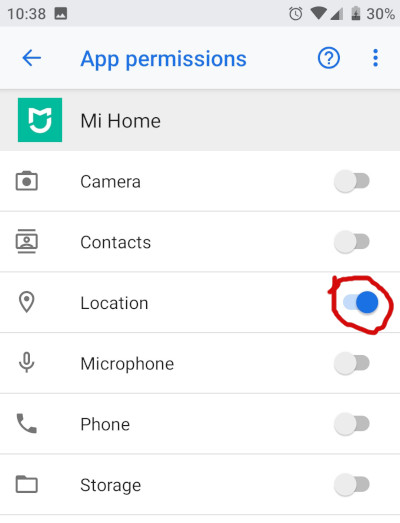Mi Home App for Windows PC – Home Security Camera 360 App. Mi Home is the best application made by Xiaomi official to manage security camera for home. Connect it with your device to networks like a camera, led bulbs, music, and other products. It is possible to download the app for PC Windows and Mac laptops from app stores using an android. Mi Home is the official Android app for Xiaomi Home.
Feb 04, 2021 Xiaomi Smart Home App. For anybody who wants to build a Xiaomi Smart Home, the first thing you need to do is get the Xiaomi Mi Home App. This Xiaomi Smart Home App is your central hub and the brain from where you can control all your devices. All your Xiaomi devices sync with the Mi Home App.
The easiest and most effective way is to install an Android emulator and install the MiHome application inside it. Installation will be performed under Windows 10 operating system.
Installing the Android emulator
● Download Nox App Player from the official website.
Pay attention to the minimum requirements for your computer:
RAM - 2 GB;
Processor - 2GHz;
The free space on the hard drive is 3 GB;
Video card with memory of 1 GB.
● After downloading, run the downloaded file and face the first problem 'It is impossible to run this application on this computer':
● Errors indicate that there may be a fresh version of the application (we downloaded version 3.7.6.1), go check the site and find it (3.8.3.1). The question remains why the site administrators do not update the links on the home page. But as you can see, this version is running without any problems:
● Click the 'Install' button and wait for the process to complete. After installation we start the application, the first emulator is created automatically.
If all went well, we will see a separate window with the Android system (version 4.4.2).
● By default, the tablet mode can also be loaded in the same way as you would prefer - you can decide for yourself, you can switch at any time: At the top of the screen we find the gear (button 'System settings'), go to the tab 'Advanced settings' and change the 'Start settings'. The emulator must be restarted in order to use the system.
● Before installing the MiHome application, we need to enable ROOT permissions, fortunately this is done by one switch: System Settings General Settings Ruth-right.
● Setting up the Nox player is complete, so let's get started with the installation of Xiaomi MiHome.
Installing MiHome on Windows
With Root permissions, it's easy to install a Russified application, if you want to Russify the device without root rights. Download the latest translated version to your PC.
● Back to our desktop android, in the right pane we find the APK package installation icon (you can also drag and drop the file from the Windows folder to the program window) and select the downloaded file.
● After installed the MiHome APP, a shortcut appears on the desktop and autoruns.
It's done! We installed MiHome on windows. How to use the appendix can be found in this article.
I'd like to point out that you will still need a phone to add devices, because you still can't throw the Wi-Fi adapter into the emulator itself. Only ZigBee devices can be added if a gateway is connected.
| You may also want to read: |
| Huami Amazfit Bip 2 VS Xiaomi Mi band 4 |
| MIUI 11: List of Xiaomi devices getting MIUI 11 upgrade leaks |
| Huawei P40 and P40 Pro are on the way |

Specifications:
ZigBee (2.0 and 3.0),2.4GHz Wi-Fi (802.11b/g/n) MiMo 2 x 2
Bluetooth (5.0 and Mesh)
Compatible with Apple Homekit

Max range: 200 meters (Line-of-Sight)
Xiaomi Home App For Pc
 Up to 32 devices
Up to 32 devicesPower Supply 5V/1A
Dimensions 90x25mm
Temperature Range -5℃-50℃
Humidity – 0%-95%RH, non-condensing
Xiaomi came out with a new smart gateway hub for their smart home ecosystem. The hub lets you connect all kinds of sensors, switches, lights and other devices from Xiaomi to their app so that can control them.
This is the third dedicated smart gateway so it is interesting to compare it to the predecessor: DGNWG02LM.
Certifications
Bluetooth with mesh
The hub acts as a Bluetooth hub and a Bluetooth mesh hub. This is a step up in comparison with the Cleargrass Bluetooth gateway, which only support the plain flavor Bluetooth. I was able to connect to the Yeelight mesh downlight (YLSD01YL) and able to dim the light and set the color temperature which was not possible with the Cleargrass gateway. It can also find the other Bluetooth devices added to the Mi home account like the Mi flora seen below if it is within range.Light
The new gateway has just a single led light for status feedback. The other gateway has RGB leds all around which could serve as a night light and also give you visual feedback.Speaker
 The new gateway does not have a speaker, but just a beeper which can be annoying. I say this because it is loud and you are not able to control the volume (through the software that is). Adding new devices to the gateway results in a loud beep.
The new gateway does not have a speaker, but just a beeper which can be annoying. I say this because it is loud and you are not able to control the volume (through the software that is). Adding new devices to the gateway results in a loud beep.Compared to the other gateway which has a decent speaker which enables voice feedback, doorbell feature, custom sounds, and even internet radio if you are into Chinese music.
Zigbee
It now supports Zigbee 3.0 (certified), which is backwards compatible with Zigbee 2.0 so you can connect the older Zigbee devices to it too. It states that you can connect up to 32 devices, but some state 64. I am not sure what the maximum is and I don't have 32+ devices to connect them to the hub so I have not checked (...yet). It might be that you can connect more 3.0 devices to it and less 2.0 which can explain the different reports.Power supply
The gateway comes with an external usb power supply (MDY-08-ET) and a 85 cm usb cable. The power to the hub is now supplied through a micro USB port which states 5V, 1A. This means you are not bound directly to a socket and thus so blocking sockets next to it like the older version. To me this is an improvement because I was not able to find a good spot for the older hub and ended up connecting it to an extension cord. If the power supply does not fit your socket or the cable is not long enough then it can be replaced by any other 1A capable usb power supply and/or cable that you might have lying around.Adding devices
You can see the hub in the Mi Home 'devices' screen. Tap it and go to 'child device'. Here you can see the devices that are currently connected and add new devices. The list will grow with the supported devices with new firmware or app updates. There are quite a few missing compared to the older Mi control hub, but it is still possible to connect to them. I guess it means that they are just not officially supported yet.Currently compatible devices are:

[a lot]
But I saw that with an update more devices are supported, so the list will keep growing. For now I connected it to the China mainland server which supports way more devices than the Europe server.
Connecting it to Home assistant
Conclusion
I think this model is a good revision and it brings some new things to the table like the Bluetooth (mesh) support which I previously solved in another way. The external power supply sounds very logic making it more flexible to find the right place to install. I can do without the night light, no harm that it is omitted. I do miss the speaker for the audio feedback, the beeper is just awful since there is no volume control.Xiaomi Home App For Mac
If you are getting started with the Mi/Aqara ecosystem then you might want to check which one you would like depending on the features. If you already own the other gateway then you might want to get this one as an additional hub.